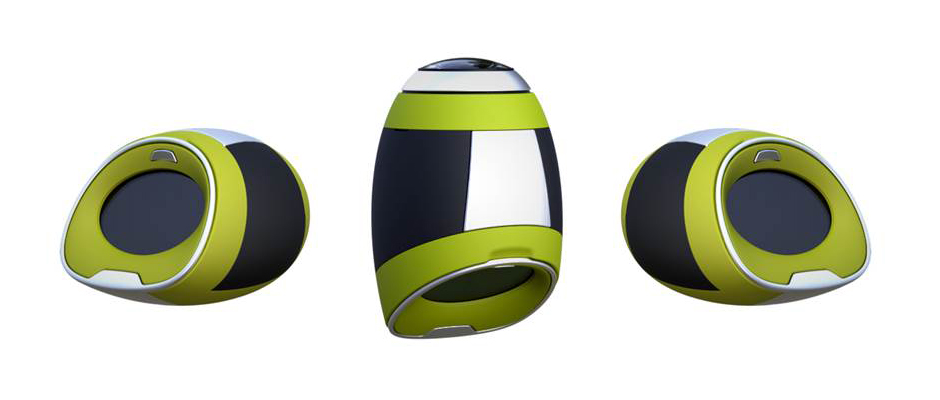We all love to create photorealistic images, but we also love to take photos. We love to capture moments and even more, capture the entire experience. A still photograph doesn’t quite get there and even a video only provides an isolated viewport of the entire setting. Tamaggo has set forth to change that, bringing a completely new way to capture the entire experience. Their product, the ibi 360, is a device that takes completely panoramic pictures with one click. At the 2012 Consumer Electronics Show in Las Vegas, it was heralded as one of the most revolutionary products of the year. Since then, they’ve announced availability, released an iPhone app and added the ability to take full 360 interactive video. We talked with Stephane LePage, CTO of Tamaggo, about the innovative design and how KeyShot was used to create their visuals.
Tamaggo
Modeling software used:
PTC Creo
 tamaggo Inc. is a consumer technology company that is developing the ibi360, the first consumer video and image taking device with fully integrated, built-in 360-degree panomorph technology that enables users to capture navigable images with just one click. the company was founded by Jean-Claude Artonne, a French ideator-entrepreneur who is the author of worldwide imaging patents. Mr. Artonne helped advance 360-degree imaging technology as founder of ImmerVision, which licenses optical and software panoramic technologies. after Mr. Artonne’s success in the business-to-business arena, he decided to create a business that would put advanced imaging technology in the palms of consumers at an affordable price.
tamaggo Inc. is a consumer technology company that is developing the ibi360, the first consumer video and image taking device with fully integrated, built-in 360-degree panomorph technology that enables users to capture navigable images with just one click. the company was founded by Jean-Claude Artonne, a French ideator-entrepreneur who is the author of worldwide imaging patents. Mr. Artonne helped advance 360-degree imaging technology as founder of ImmerVision, which licenses optical and software panoramic technologies. after Mr. Artonne’s success in the business-to-business arena, he decided to create a business that would put advanced imaging technology in the palms of consumers at an affordable price.Looking upon the shape of the ibi 360, you can see how capture images is being rethought, the ‘form follows function’ approach to product development. With this, each discipline and everyone involved worked collectively to bring the idea together. “Design and engineering had to work in symbiosis to achieve the high quality product we wanted.” Stephane explains, “The unconventional form factor is a big challenge in terms of electronics and mechanical packaging. The shape of it is very simple, but to achieve simplicity like that, is actually very complex. We created very clean surfaces, creating the shape we wanted with PTC Creo.”
For most of the development, Tamaggo used another high end rendering software, but soon began actively searching for a solution that wouldn’t require massive hours of setup and rendering times. “KeyShot was the perfect answer for us. Seamlessly import from PTC Creo, interactive material application and quick rendering is a dream come true for us. It allowed us to quickly render concepts and use this to forward the design work. KeyShot is a dramatic improvement in our workflow. Basically, it has brought back rendering as a useful tool for design, on top of being extremely efficient to present realistic visuals to non-technical people.”


